Story by Graham Gauld
For companies like Ferrari and Maserati, the importance of the private customer could never be underestimated, and with Ferrari in particular, Enzo was always willing to do anything for certain clients. One such was Dr Enrico Wax from Genoa, who always demanded something special and different. As a result, he had the ear of Mr Ferrari.
For example, in 1959, when Enzo Ferrari was planning to put the 250GT Short Wheelbase into production, Dr Wax arrived, and in his conversation with Enzo Ferrari the subject of the new car was brought up. Dr Wax showed an interest and the story goes that he was taken into the factory where the first group of three prototype SWBs were being built. These were chassis 1539GT, 1613GT and 1739GT. Enzo Ferrari pointed to the first one in the line, which was 1739GT, and offered it to Wax. The other two cars were being built for the upcoming October motor shows in Turin and Paris with Pinin Farina bodywork, and as Dr Wax wanted to have some stylistic changes to the bodywork, his car was sent to Bertone.
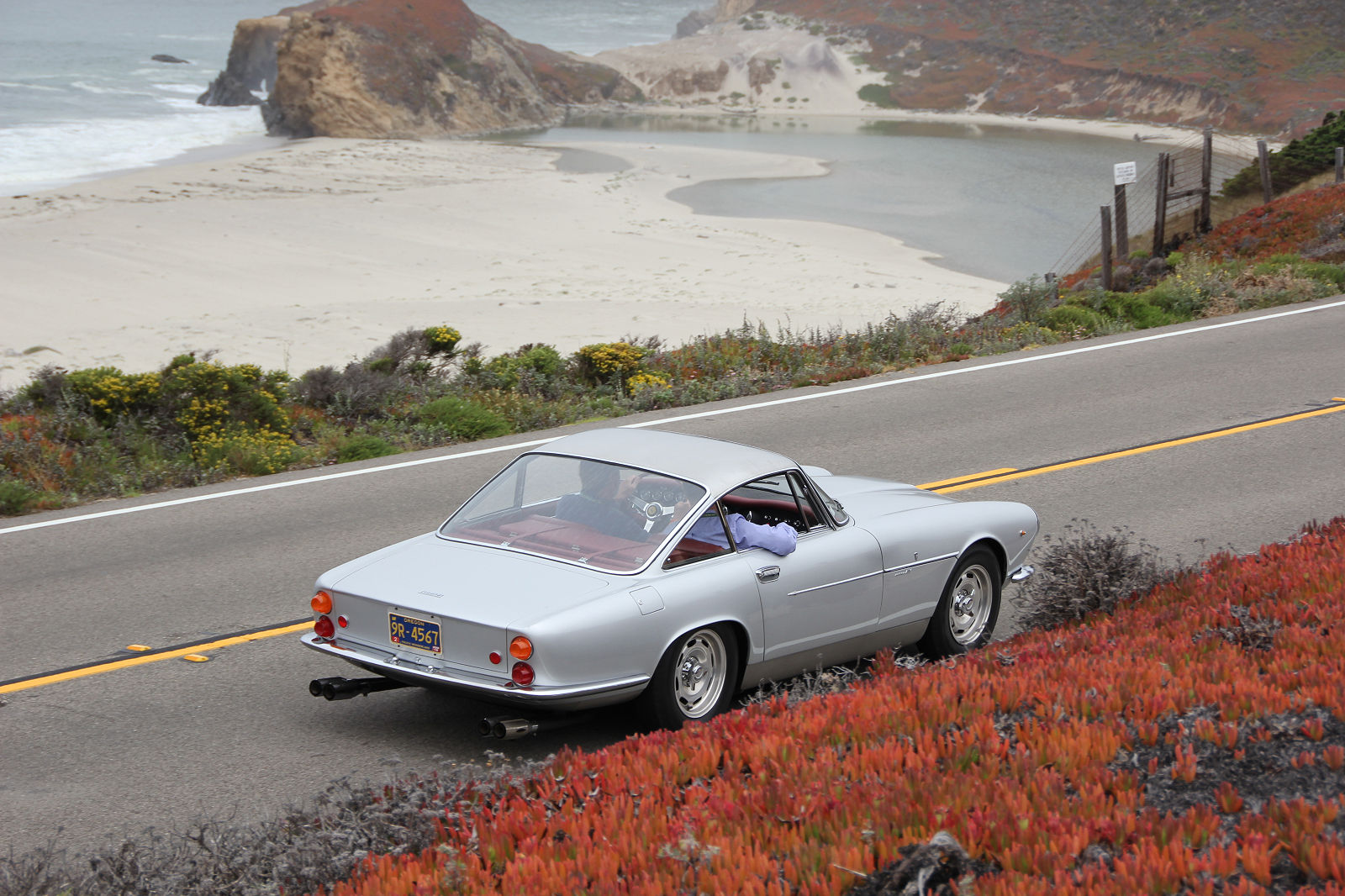
Ferrari prototype 250GT SWB 1739GT built for Dr Wax with coachwork by Giugiaro at Bertone at Monterey in 2014. Hugues Vanhoolandt photo
The chance to design a car for Dr Wax was given to the 21 year-old stylist Giorgietto Giugiaro. The car proved to be one of the star attractions. As can be seen from the photograph it had a wire mesh grille at the front and the hood tilted forward. Another personal touch was that on the front three-quarter panels had the badges “Prototype EW” – for Enrico Wax – and even the familiar Ferrari badge on the front was made bigger than standard. Under the hood Dr Wax had specified that the cam covers be painted red as in a Testa Rossa, and he specified Campagnolo wheels rather than the normal Borrani wheels. In other respects, it was a typical Short Wheelbase competition car but with a luxurious interior.
The car was finished in time to be shipped to Geneva for the March 1960 Motor Show before being delivered to Dr Wax. It was then borrowed back to be shown at the Turin Show in October of that year but was then sold in 1961. The car is still around, however, owned by an American Ferrari enthusiast.
A few years later, in December 1967, Dr Wax decided to go to Maserati for a new car and approached them about buying one of the new Maserati Ghiblis and have it customized to his own specification, and the factory agreed.
So who was Dr Wax?
Enrico Wax was President of Wax and Vitale SpA in Genoa, the importers of Johnny Walker Scotch Whisky, Moet et Chandon champagne and agents for many more premier brands of alcohol. He was a discerning customer who had his own idea of how his cars should be finished. It is sufficient to say that none of his cars were ever in standard trim; they all had to be different.
So it was that when Wax telephoned Maserati on April 13 1968 to officially place the order for the Ghibli, he was put through to Ermanno Cozza – later to become the Maserati historian and archivist – who pulled out a standard A4 pad and started to scribble down the instructions with a scribbled quote beside each request. (See copy of his notes.)
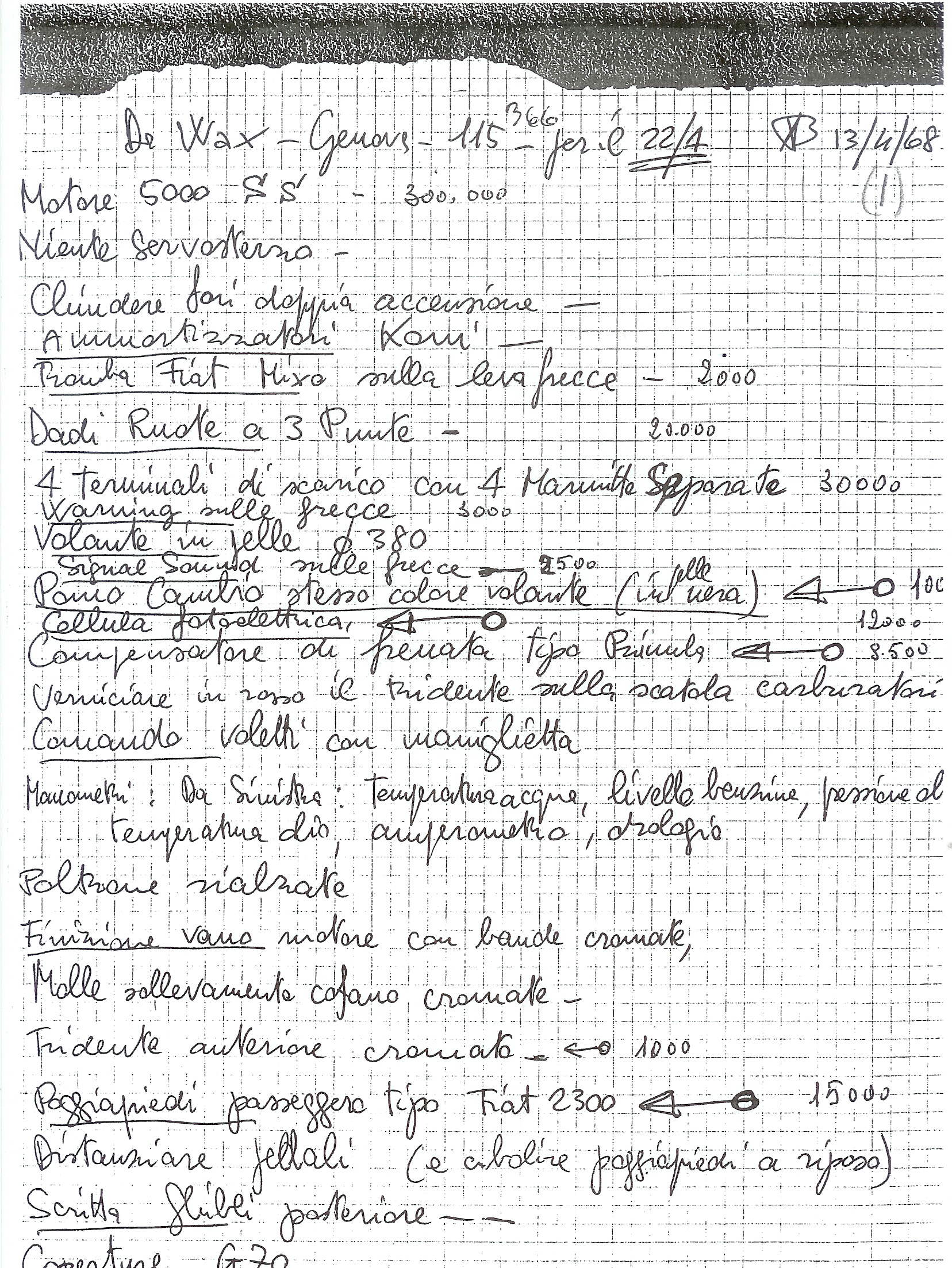
Ermanno Cozza’s hand scribbled notes from his telephone call with Dr Wax regarding the Special Ghibli. (Linwood Collection)
The two most important elements about this Ghibli were the engine and the bodywork.
The normal engine would have been a 4.7 litre V8 Ghibli but on this car’s build sheet the engine, No.0366, is logged as a 5-liter dry-sump SS engine of which only four or five were built. As a result, the car chassis plate carries only the car and engine numbers with no homologated engine number or engine type.
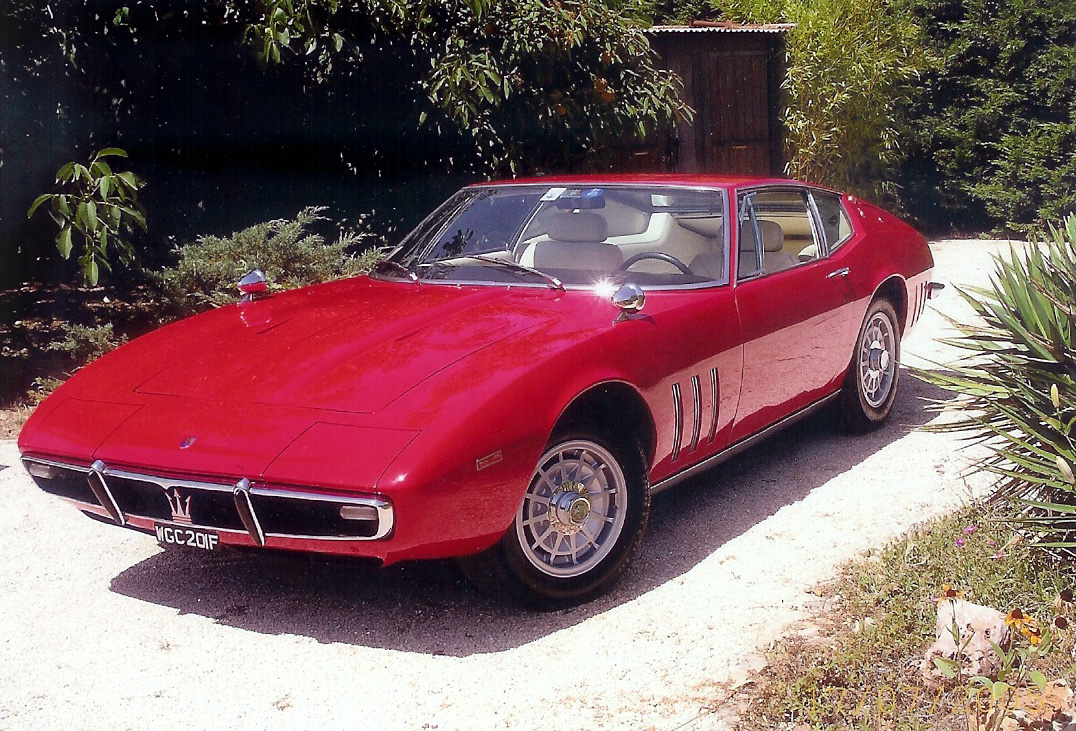
The car after it had been properly restored showing the three shark fin vents on the side of the car. ( Linwood archive)
After Bob Linwood purchased the car, he later realized the reason was because this 5-liter dry sump engine was not officially homologated until nearly a year later! Dr Cozza has since confirmed that it was the first SS engine to be put into a Ghibli and probably the first engine to be built.
When it came to the bodywork, Dr Wax wanted three “shark gill” slanted vents behind the front and rear wheels, special bumpers and, something which he appeared to demand on all his cars, the engine bay was to have chromium plated trim around it. The exhaust system was also special, having two separate pipes each split to give four silencers. The interior trim and fittings were also non-standard.
When the car was finished, test driver Guerino Bertocchi took Cozza with him on a high speed test run on the Autostrada del Sole where it hit 268.6 KPH ( 171.5 mph) . Though the car was delivered with manual steering Dr Wax decided he would prefer power steering.
Dr Wax eventually sold the car to an American enthusiast and later, in 1988, it was imported into the UK where it was sold to a Mr Sikander Latif who had heard the car had been built for the Shah of Persia and that it had been timed at over 200 mph! He wrote to Maserati about this and was told that the car had not been built for the Shah but for Dr Wax and that it had not been timed at 200 mph.
It is a number of years now since last I met up with Bob Linwood, and he has returned to the United Kingdom, and as far as I am aware, is still the owner of a very special Maserati which has certainly increased considerably in value as a truly unique Ghibli.
And another Wax Ferrari as found by Jonathan Sharp
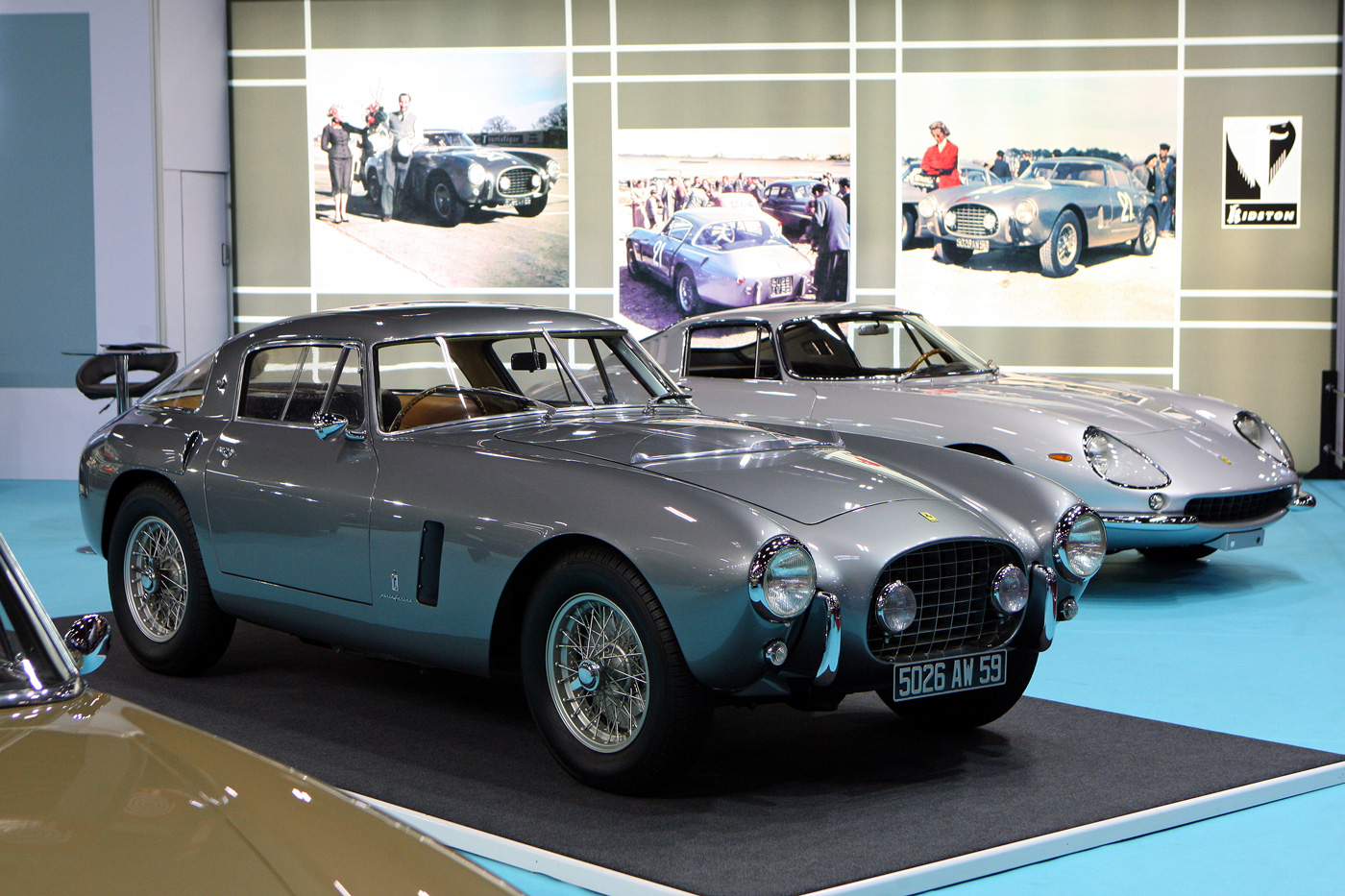
Retromobile 2020: The star among many stars on the Kidston stand this year, for me, was this 1953 Ferrari 250MM chassis 0310MM, The 16th 250MM built and the ninth carrying coachwork by Pinin Farina. Supplied new to one of Enzo’s VIP customers, Dr Enrico Wax of Wax and Vitale, the Italian importers of various luxury items including Johnny Walker Whisky and Connolly leathers. Pinin Farina took delivery of the chassis on the 4th May 1953 originally finishing the coachwork in Rosso Finitura Corsa. Jonathan Sharp photo
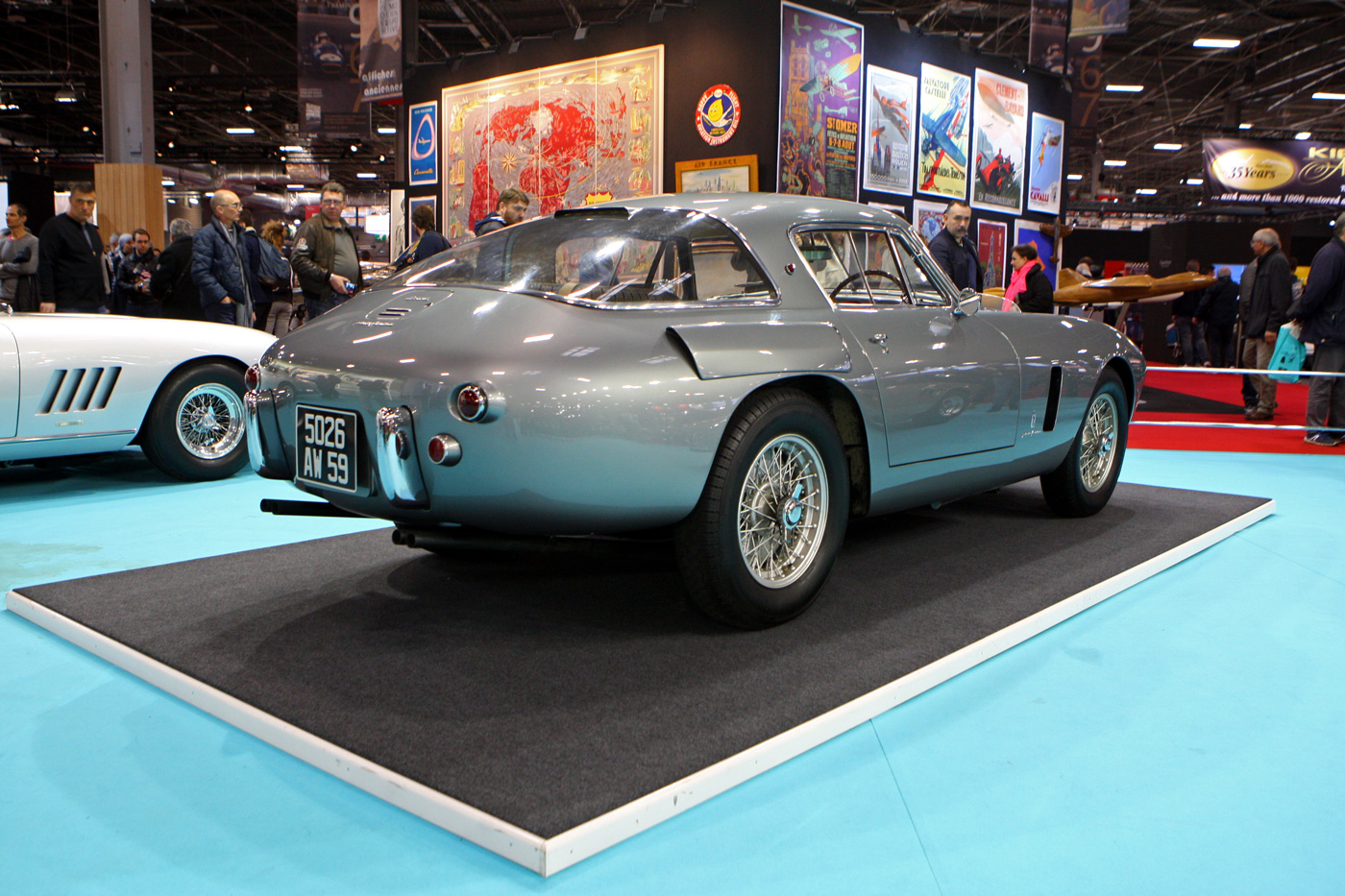
Wax rarely kept his cars for very long and 0130 was no exception being sold via Ferrari to gentleman driver Pierre Noblet, who took delivery on the 16th November 1953, the coachwork by then being finished in French racing blue. Noblet then had the car repainted in a more sober grey finish, better suited in still war-damaged France.
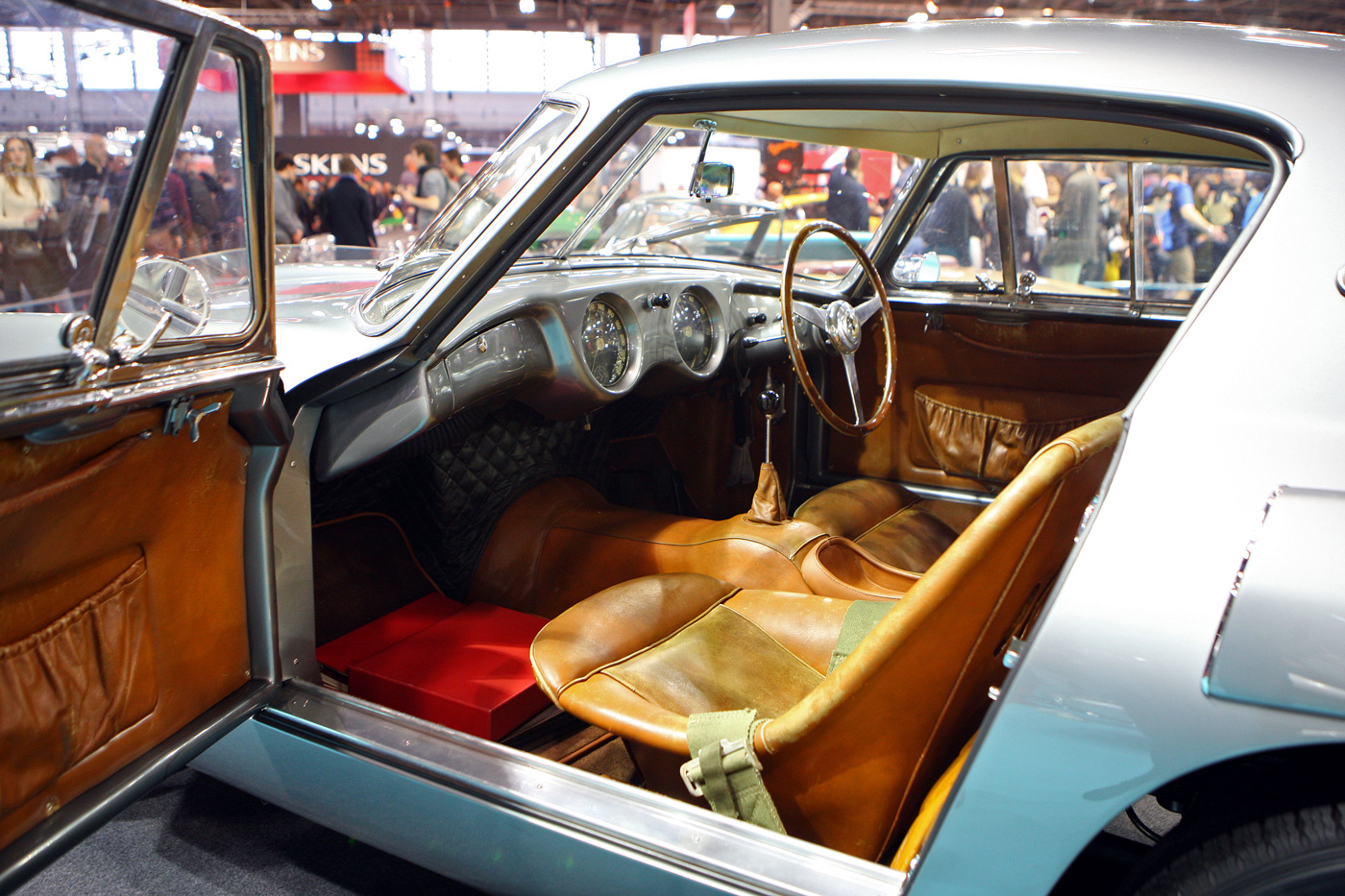
Noblet proceeded to race 0310 in various high speed rallies before turning to circuit racing posting strong finishes at Montlhery and Monza. In 1957 0310 passed into the hands of Parisian architect Christian de Galea via Paul Vallees Autoval dealership. Several owners later in 1967 0310 was acquired by Giulio Dubbini in whose family care 0130 remained until 1998. Jonathan Sharp photo

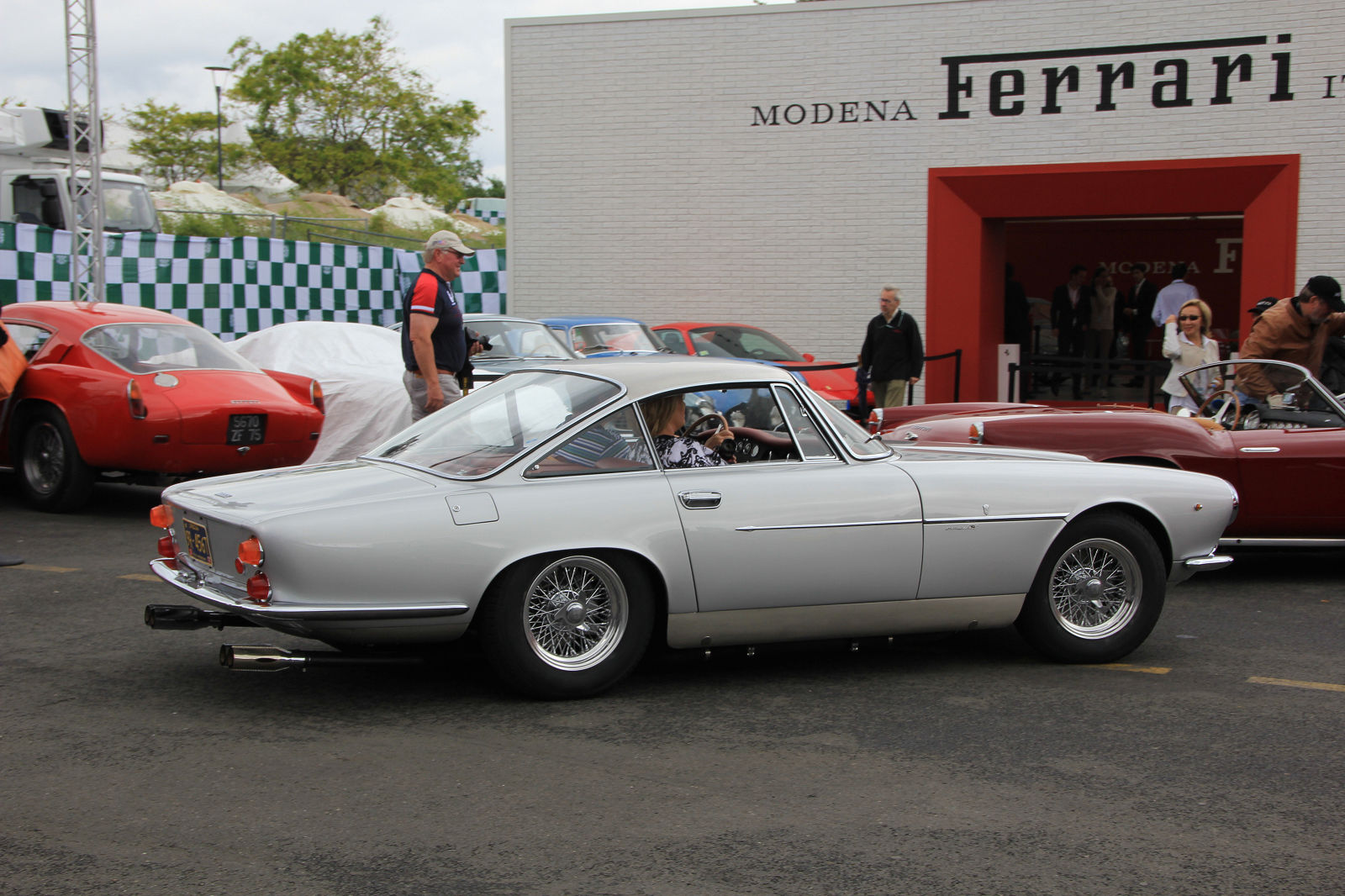
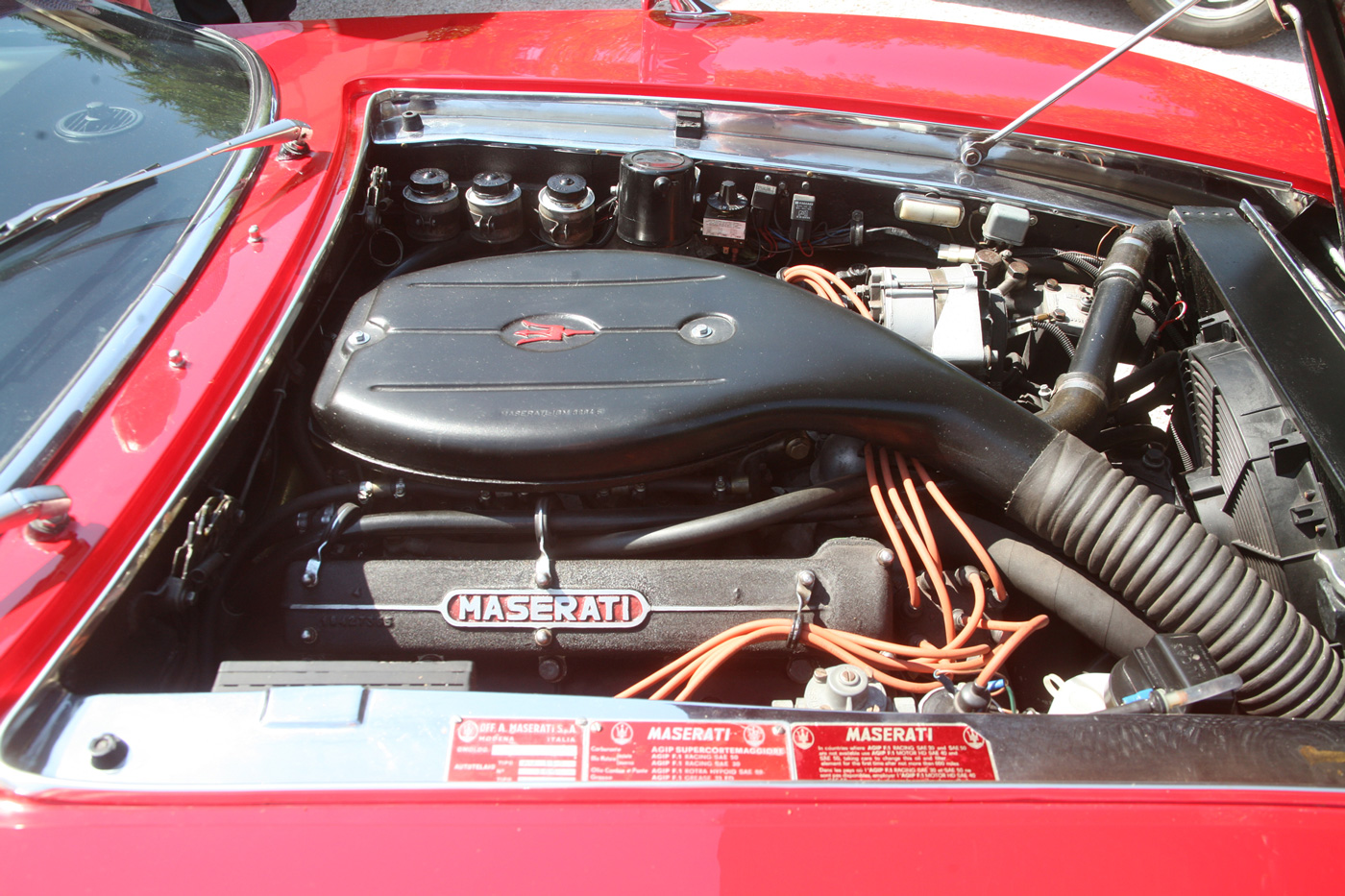
Excellent story of great car! Those were the days when you could drop by the Maserati Factory put a few you quid down, and over lunch at Lauros, design a car of your dreams.
The seet of Cozza reads “doppia accensione” which I understand as double ignition. The picture of the engine bay sugests that the car had one spark plug by cylinder. Were the heads replaced?
Another question, anybody with information concerning Paul Vallees and Autoval? He sold my Ferrari 250GT, but I could not find any record.
I owned at some point the 250MM and was the one who had it repainted in metallic grey. Color was chosen once more by Pierre Noblet himself from the samples , and comparing with his original color pictures ( and memory which was very accurate).
The real reason for which he repainted the car grey ( from French blue the color chosen by Ferrari to induce him to buy the car) was that the 250MM was officially his company car. His father the CEO thought French blue did not look good among other employees cars, and asked his son to repaint it. It was done at Carosserie Verplanke, a Mercedes agent owned by the family.
But as Pierre told me, the good news was his father did not argue on the price paid for the company car. He just paid the invoice,,,this is also the reason for which he was racing under a pseudonym, Pertin, because he did not want the employees to be too excited by his racing, but more importantly the tax man to figure out he was using the company car for week end activity,,,I guess we passed the statutes of limitations so I can disclose. Pierre was such a wonderful man!
From Graham:
Frank
Thank you for the compliment and it is far too long since last we met. Indeed do you realise it is 25 years ago this year since we first met at one of your first Affairs at the Golf Club near Laguna.
Keep fit and well
Graham
Thank you for those kind words regarding my Dad and GrandDad!…
Some corrections,
My grandDad was not anymore CEO of NOBLET & Fils company but of course, still share holder…
So my Dad was on his own to make decisions and management!… at the time in 1953.
My Grand Dad was only opening the everyday Postal correspondence and left the Ferrari invoice envelope on my Dad ‘s office table with the hand written motion: “opened by error”!…
But that’s true he was very pissed off with the bright blue color of the car among the, either “light black“ or “dark grey“other cars in the factory car park!…
The Carrosserie Verplancke where 0310MM was resprayed had no relation with the Mercedes-Benz car dealerships we ran, my Dad and I many years later…
Hope this details helps!…
Best.
Gregory Noblet
Some clarificatiosn about some points in the text and in the comments:
“As a result, the car chassis plate carries only the car and engine numbers with no homologated engine number or engine type.”
Engine numbers were never given on the boiler plate. That was completely normal, not only for the first 5000 SS engine, but also for the second all the following ones … and there were much more than four or five built as stated in the text.
“Enrico Wax was President of Wax and Vitale SpA in Genoa, the importers of Johnny Walker Scotch Whisky, Moet et Chandon champagne and agents for many more premier brands of alcohol. “
Sure, as stated in the caption lower down, he was also importer for Connolly leather – and therefore not only a client of Ferrari and Maserati, but also a supplier. This is in this connection more important than his alcohol import business.
“The sheet of Cozza reads “doppia accensione” which I understand as double ignition. The picture of the engine bay sugests that the car had one spark plug by cylinder. Were the heads replaced?”
No. It reads “chiudere fori doppia accensione” which means close the holes for the second ignition. None of these engines ever had factory second ignition. Only the holes, as a reminder of their racing past.
Here’s another one of Enrico Wax’ very special Maserati:
http://tipo107.com/Maserati107/107.300-520/Seiten/504.html#21
How fantastic is it that former owners can argue what happened and why over significant cars reported in Veloce Today!
Obviously this on line magazine ha a wide global following…
From Graham:
Gerhard. I appreciate the comments you have made, particularly in deciphering Cozza’s writing. I only suggested publishing a copy of the notes as it is so rare to eavesdrop into such a fascinating telephone conversation. Graham Gauld